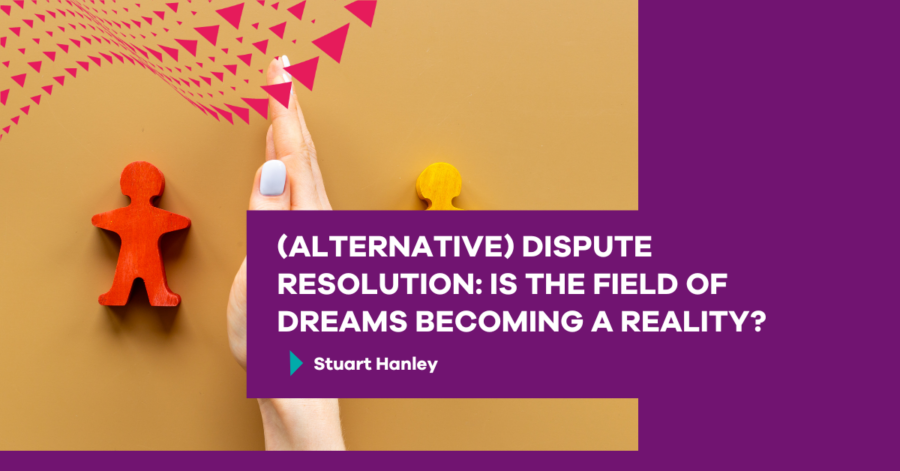(Alternative) Dispute Resolution: Is the field of dreams becoming a reality?


Are we finally reaching the tipping point when (Alternative) Dispute Resolution (ADR/DR) becomes the norm and not the exception in personal injury (PI) claims?
Three key recent developments seem to indicate we have or are about to.
The Civil Procedure Rules Committee (CPRC) has launched a consultation on the use of dispute resolution in civil claims, including PI. In essence, the consultation proposes changing the Civil Procedure Rules (CPR) to better enhance and promote the role of dispute resolution. It flows from the recent Court of Appeal case of James Churchill v Merthyr Tydfil BC, where it was held that court proceedings could be put on hold pending the use of dispute resolution to try to settle a case.
In many ways, this new consultation builds on the original Woolf reforms which led to the CPR being introduced way back in 1999 and Lord Woolf advocating then that litigation and going to court should be the last resort.
Next, we have the launch of the new ‘Small Claims Mediation Service’ (SCMS) and while this currently excludes PI claims, it may well expand in the future to cover these claims, too. It is predicted that the number of claims dealt with by the SCMS will grow from 20,000 annually under the current voluntary service to 92,000 per year, with 39 new mediators already recruited.
Finally, we have the Ministry of Justice (MoJ) stating that they have not ruled out mandatory mediation for higher value county court claims while pointing to the success of the ‘Ontario’ mandatory mediation mode from Canada.
We also have an increased interest in ‘judge-led’ mediation but here many litigators will rail against this and consider that they are already issuing court proceedings as the last resort and so in turn argue that if a case gets to the issue stage such ‘judge-led’ mediation is just replicating a ‘judge-led’ trial, so just adding effort and duplication to the process.
At Minster Law, our experience is that proactively using various models of dispute resolution in PI claims helps to drive quicker settlements for clients and removes friction from the claim process. This benefits all parties, including claimants, law firms, insurers, and courts that are inundated with a backlog of claims.
In a previous MOJ Claims Portal Stage 3 trial, we found we could resolve disputed quantum claims in 10 days compared to the then 10 month wait for a court hearing and all our clients gave positive feedback on the process and outcomes.
In addition, we found the speedy turn around helped identify and resolve broader friction points in PI claims with third party insurers, which in turn allowed an informed discussion to agree protocol points. This reduced the need for any form of dispute resolution in future claims, creating a virtuous circle which also helps free up limited court time for other pressing public interest matters.
A key to the success of our pilot was the skill and experience of the mediators, which is crucial to give all parties confidence in the process and outcome and to allow us a claimant lawyers to ensure we are acting in our clients’ best interests.
In contrast, other lawyers report frustration with mediation where the mediator seems to simply act as a post box between the parties with no real value add or wider take away points.
So, whether we call it ADR or DR, whether it is mandatory or not, and whether it is pre or post litigation, the key for us is that the mediators have the skill and experience to deal with the particular cases before them and that it is part of a seamless, low effort digital process.
While many PI lawyers remain cynical about ADR/DR, our experience shows that if you build it (properly), they will come.